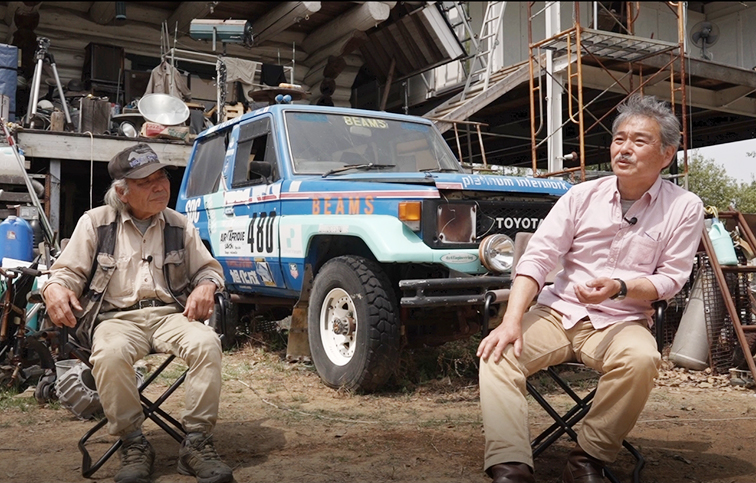INTERVIEW #05
I would have felt right at home at the Paris-Dakar if I had worn the Bradleys.

Trajectory from Japan to Paris-Dakar
Mr. Kubota.
I attempted to travel across Japan by jeep and it took me 83 hours and 20 minutes. From Cape Sata in Kyushu to Cape Soya in Wakkanai, Hokkaido. It all started when I had it published in Mainichi Graph (a photography magazine of the time).
Then Yokota (Kiichiro Yokota) in Tokyo invited me to come to Tokyo.
I was 28 years old when I first went abroad with Yokota.

NTV program "Ohayo 700", across Africa and then by a third route in Morocco to Munich, Germany.
After that, I started entering the Paris-Dakar Rally.
I ended up racing the Paris-Dakar 12 times and finishing 50% of the race.
Paris-Dakar" appears for the first time in the Japanese mass media
Mr. Ishihara.
Mr. Yokota learned about the Paris-Dakar when he passed a car that had retired (from the Paris-Dakar) while he was traveling in Africa.
He said, "Hey, have you ever heard of 'Paris-Dakar Rally'?"
I did a feature on the program about Mr. Kubota's drive and challenge in KP61 (Starlet).
That was the first time the "Paris-Dakar Rally" was introduced to Japan.

Mr. Kubota.
I'm normal (unmodified class) all the way.
Since we drive on rough terrain, there are no complicated modifications, and we haven't tinkered with anything other than increasing the pressure of the turbo.

Consult with 4x4 Engineering about the strain on the wheel.
Mr. Ishihara.
When I drive on a piste (rut) washboard, the tire wheels hurt like hell.
I took the wheels I used when I first ran this "Naru-go" for testing, but they were squishy. I managed to finish the race because I brought a few of them.
With that in mind, I next went to consult with Matsumoto-san at 4x4 Engineering.

When I asked him about it, he said, "All the wheels I've been using are no good." "Our wheels are absolutely fine! He said, "Our wheels are absolutely fine!
Then I started using BRADLEY 02, but the rim end still got dented. Mr. Matsumoto seemed to be very frustrated by that (laughs).
I'll make a wheel that won't dent. Then I'll make a wheel that won't dent" (laughs).
That's how BRADLEY's development progresses.
Feedback from the race helped Bradley achieve the ideal balance.
Mr. Ishihara.
This is how we were allowed to test various wheels, and the end result was something that fit the four-wheel drive.
I think the appeal of BRADLEY is balance.
It can be used in races and on ordinary roads. I don't think there is a wheel like that (anywhere else).
BRADLEY is feeding back from the point where we put it in the Paris-Dakar and pulled it into the race as much as we could, so it shouldn't be too difficult to get it back from there.

After this, I'm going to the Paris-Dakar in a fast Terrano.
Still, I've been using BRADLEY V for a long time, and for the first 200 km or so, it's at a level where I can run alongside a works Pajero or Citroen or something.
But I'm not worried about my feet at all anymore.
All of our competitors came to see us. They said, "Which wheel?" (laughs).
We wanted to use it ourselves, so we took pictures and made notes.
BRADLEY really just got better.
I guess BRADLEY was able to solidify its flexibility while everyone else was saying all kinds of things.
